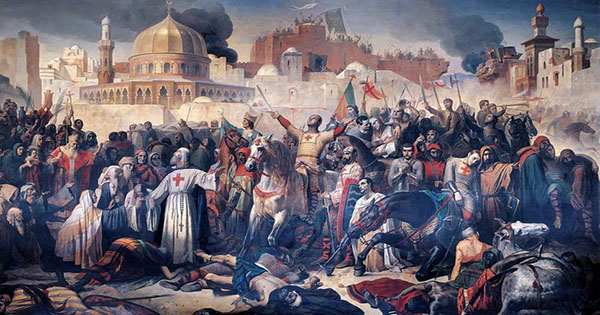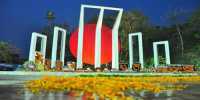The war-wounded bodies of European troops who perished in the Crusades — the medieval religious conflicts that tried (and eventually failed) to reclaim Jerusalem and “the Holy Land” from Islamic rule – have been discovered in a mass grave outside a castle in Lebanon.
Much of what we know about the Crusades comes from historical documents and human remains discovered throughout the time in Europe and the Middle East. However, because conflict-related mass grave sites like this are rare, the researchers want to use it to learn more about this turbulent period of history.
Archeologists from Bournemouth University in the United Kingdom uncovered the skeleton remains of at least 25 young men and teenage males not far from the ruins of Saint Louis Castle near Sidon, Lebanon, as published in the journal PLoS ONE. The Crusades were a series of religious warfare between Christians and Muslims that began (ostensibly) to gain possession of sacred locations to both parties. The campaign carried on for eight years, from 1096 to 1291 CE, through eight different church-sanctioned expeditions, but the Christian warriors’ attempts to “liberate” the Holy Land finally failed.
While there is evidence that some Crusaders settled in the Near East and formed ties with the locals, the Eastern Mediterranean shoreline was notoriously murderous for a few centuries, as these freshly discovered bodies demonstrate. Some of the guys were born in Europe, according to DNA and isotopic tests of their teeth, indicating they were Christian Crusaders. A coin and belt buckles of evident European origins were also found in the burial.
The radiocarbon dating of the soldiers’ bones indicates that they perished in the 13th century CE. After being taken in 1110 CE after the First Crusade, the European Crusaders took control of Sidon at this time. The warriors died when the city of Sidon was destroyed by Mamluk troops in 1253 CE, according to historical accounts and the date of the bones.
“All of the bodies were those of adolescent or adult males, implying that they were combatants who fought in the battle when Sidon was invaded. Dr Richard Mikulski, an archeologist at Bournemouth University who unearthed and analyzed the skeletal at the Sidon site, said in a release, “I knew we had made a significant discovery when we saw so many weapon injuries on the bones as we excavated them.” The crew was also able to piece together the bodies of the individuals, displaying some of their horrifying injuries and highlighting the terrible realities of medieval combat.














